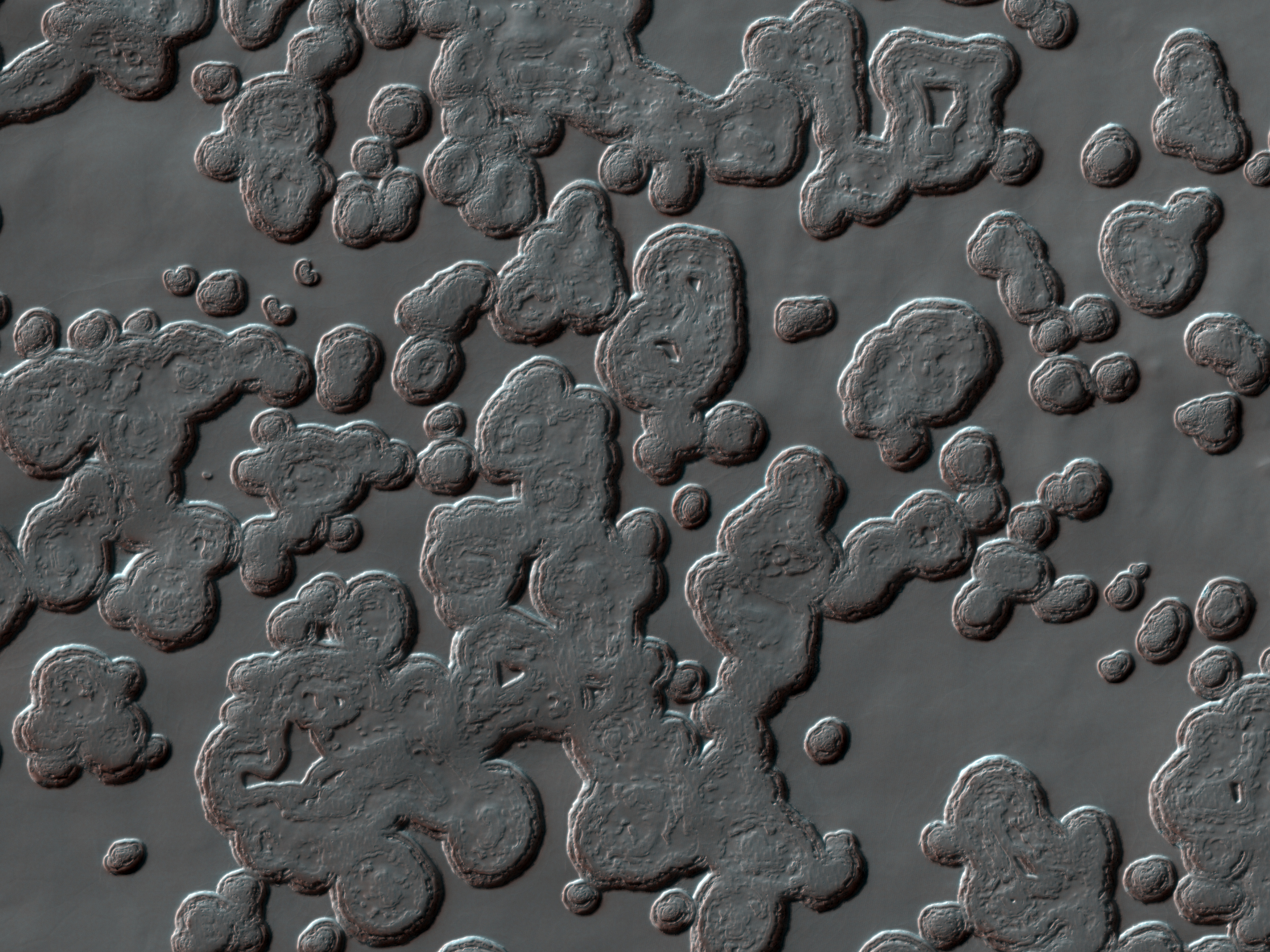
This chain of secondary craters just happened to be well-aligned with HiRISE's groundtrack (the path across the surface that a spot directly below the MRO spacecraft would trace out). Because of this favorable alignment, HiRISE was able to capture most of the chain in one 25 kilometer-long (15.6 mile) image.
Secondary craters occur during the formation of an impact crater. Impacts are very high-energy events, and while some rock gets melted or vaporized, other rock gets broken into large chunks and flung outward from the crater. Some of these pieces have enough energy to form small craters themselves when they reimpact the surface of Mars.
These craters can be of the same diameter as primary craters (those created directly from bodies entering the Martian atmosphere from space). In addition, primary crater clusters also exist (see examples like PSP_010200_1805, PSP_010292_1785, and ESP_017270_2265), leading to difficulties in determining the process responsible for creating a particular group of craters. One distinguishing feature of secondary craters is that they tend to be irregularly shaped, due to the lower velocity of crater ejecta.
Photo credit: NASA/JPL/University of Arizona
Note: This image is located inside the northwestern edge of
Isidis Planitia.
















































